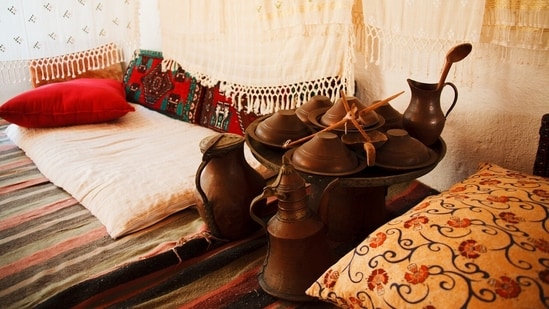Explore how you can infuse the soul of traditional Indian crafts into your modern interior design, creating a unique and captivating ambiance in your home.
Skilled artisans toil over strikingly intricate designs in the heart of India’s rural landscape, continuing legacies that have gracefully traversed for generations. However, witnessing the trials and tribulations of their parents, many of their children, opt for different paths. With fewer hands to pass on these art forms, there is a genuine concern that the very essence of our culture might fade into obscurity. But one must understand that it is about reimagining it for the contemporary world. This does not mean a compromise on tradition but rather use it to fit into modern contexts. When incorporated into architecture and interior design, these unique and rich Indian crafts provide an important link to the past and a strong sense of identity. (Also read: Designing your dream home: 4 expert tips for embracing aesthetics in luxury home interiors )

Tips to Integrate Indian Crafts into Your Modern Home
Ridhi Khosla Jalan, Interior Designer and India’s Premier Design Influencer shared with HT Lifestyle some unique ways to infuse a touch of traditional arts into our home interior design.
1. Doors that tell tales: Instead of a mundane wooden door, picture one etched with captivating Madhubani or Gond art. These designs are not just embellishments; they serve as the gateway to a home where the past and present harmoniously coexist.
2. Functional art: Bar units or dining tables can transcend their mundane existence by integrating designs like the Warli painting. These elements invigorate life and colour into what would otherwise be ordinary pieces of furniture.
3. Wall accents: Traditional crafts can be transformed into framed wall art instead of the usual paintings or generic prints. This not only gives them a chic edge but preserves their timeless essence.
“Amidst the ubiquity of Western design trends in magazines, TV shows, and social media, it’s easy to be swept away. But one must remember – a storehouse of aesthetically beautiful design possibilities is right here in India, waiting to be unearthed and woven into our homes. Also, given that these techniques have developed over centuries they are inherently sustainable. Moreover, including traditional arts and crafts in architectural jobs can engage local artisans by offering vast employment opportunities,” says Ridhi.
She concluded, “It is high time we celebrate our heritage, not by isolating it to museums or confining it to festivals, but by integrating it into our daily lives. This not only supports and sustains the artisans who bring vitality and depth into these crafts but also enriches our living spaces. The beauty of design lies in evolution. By blending the rich traditions of Indian craftsmanship with contemporary design principles, we are not just preserving, but giving it a new lease of life.”
 Subscribe today by clicking the link and stay updated with the latest news!” Click here!
Subscribe today by clicking the link and stay updated with the latest news!” Click here!